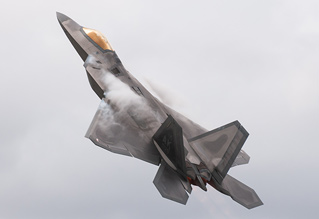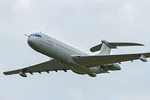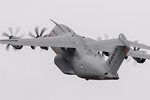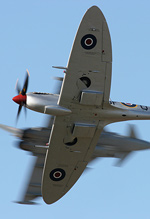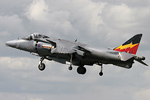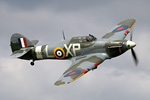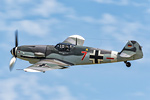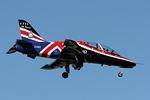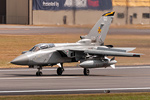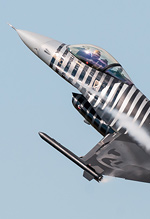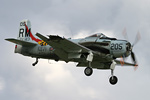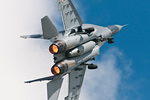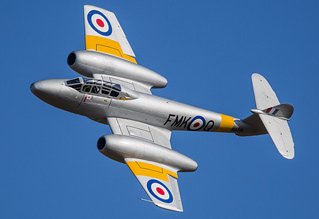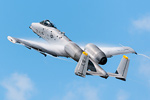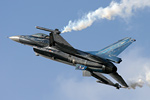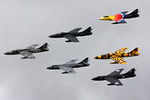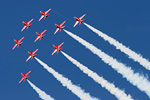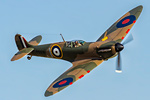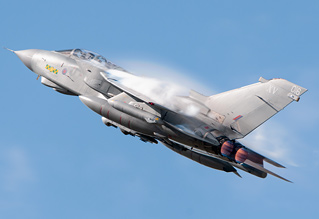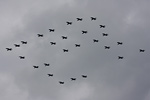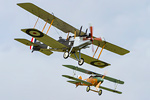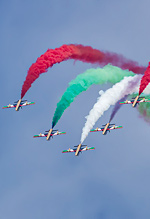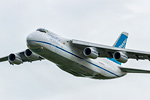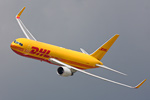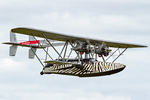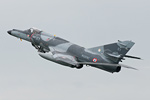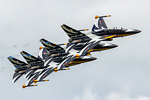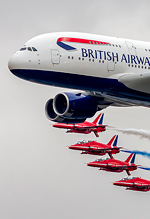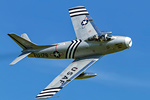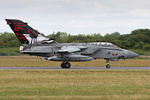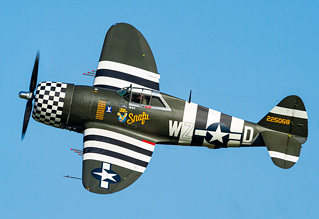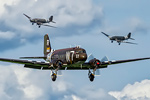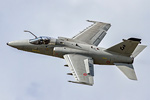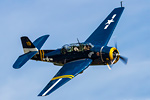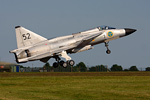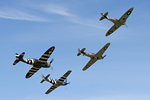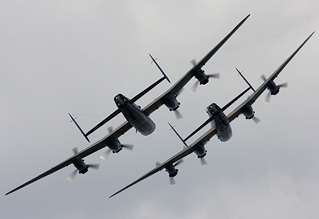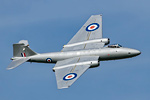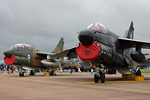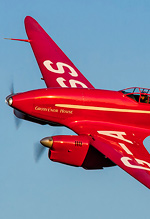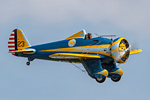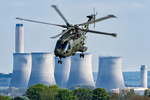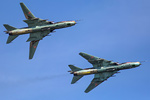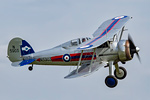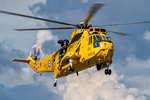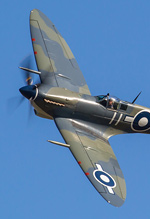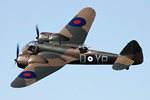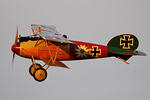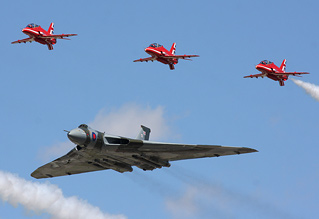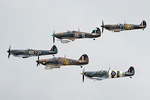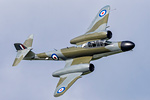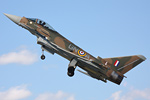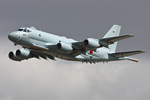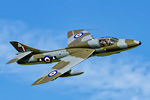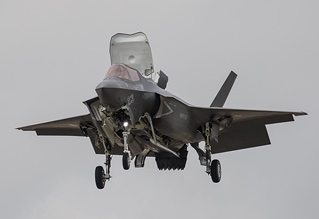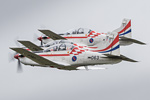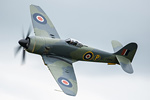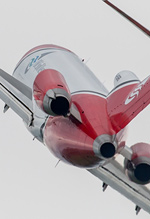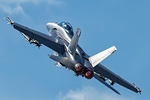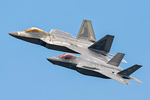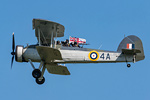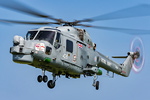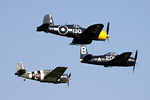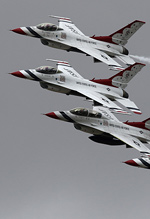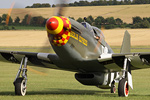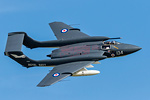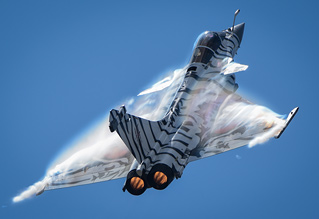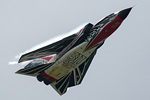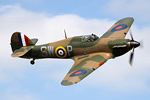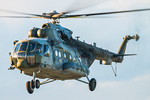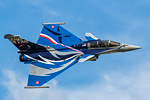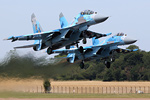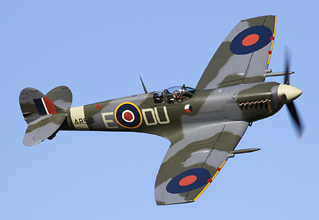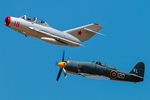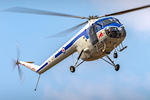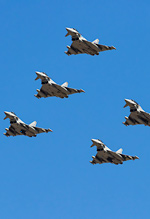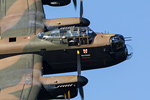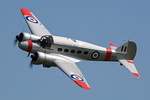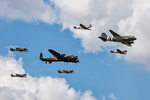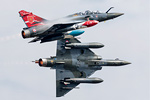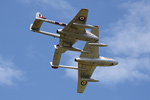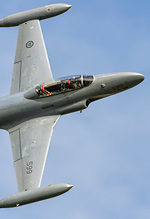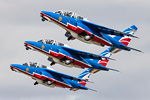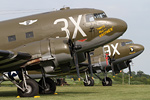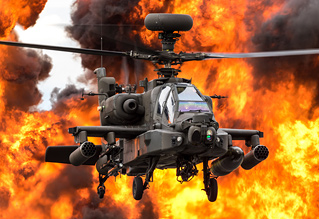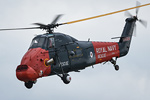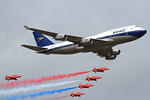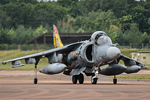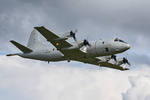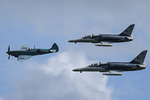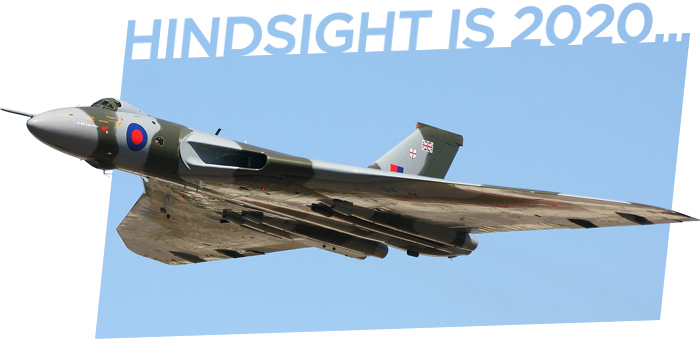
2010-2019: A Decade In Review
Wednesday 1st January 2020
The past ten years have been full of both literal and metaphorical ups and downs in this hobby. We've seen things we never thought we would, experienced joy and grief, laughter and sadness. We've basked in glorious summer sunshine, and huddled in the rain. One of the best ways to look forward, is to start by looking back.
In UK Airshow Review's final piece of the decade, and the rest of the staff team look back at some of the defining moments of "the teenies". Photography as credited.
One of the most memorable starts to the decade was, against the backdrop of the credit crunch, the global economic crisis, and this great new trio of DJs called Swedish House Mafia, was one of 2010's first airshow announcements. Few might remember that straight out of the blocks, the first announcement for RIAT 2010 was flying and static attendance by the Romanian Air Force MiG-21 LanceR. Sadly, that attendance was never to materialise, and as the months wore on, the Romanian MiG dropped off the list, but 2010 contained plenty that we all took for granted at the time.
The RAF's Harrier fleet was finally able to mount a "role-demo" display following the type's absence from the airshow circuit for a number of years due to commitments in Afghanistan. When we saw the Harrier displaying up and down the UK, including its trademark bow, it's fair to say we all breathed a sigh of relief. An airshow icon was back, and airshows improved immeasurably with its participation. Flight Lt. Steve Kenworthy of IV Squadron performed flawlessly up and down the country, including a very dramatic show at the RAF Cosford Air Show in soaking wet conditions.
Little did we know that the Harrier, along with the brand-new Nimrod MRA4s and countless other types, were soon to be slashed under the crippling 2010 Strategic Defence Security Review ("SDSR"). And so, the return to airshows of the Harrier would end up being its swansong. The perfectly serviceable and airworthy fleet with which many non-aviation enthusiasts identified with were sold to the Americans to be cannibalised for spare parts.
We'll be lamenting the loss of the Harrier for years, but it was a reminder never to take anything for granted. It wasn't just the Harriers that slipped away at the start of the decade, either. The RAF's fleet of Dominies were very swiftly phased out, along with the Jetstreams and, in early 2011, the Tornado F3s and vuvuzelas were swiftly withdrawn.
2010 did see some fantastic other moments though; the Airbus A400M, one of the few modern aircraft to grace our skies with a decent bit of charisma, made its mark. Those of us at RIAT that year, and most of the subsequent shows since will remember being amazed at the huge machine's aggressiveness and agility in display flying at the hands of the late and great Ed Strongman. That year also saw (after the 2008 show-cancellation) the UK debut of the F-22A Raptor, and the RAF BBMF also put on a rare synchro display with Spitfire MK356 and a Typhoon to commemorate the 70th anniversary of the Battle of Britain. However, one the true memorable moments of the tributes to "the Few" that year, was at Duxford. The aerodrome itself has very historic ties with the Battle of Britain Canon, and the September Airshow hosted sixteen Spitfires in the air together. That spectacle earned itself the No.1 place in our 2010 Top Ten Moments, and rightfully so.
By contrast, 2011 was a year with interesting moments but it never felt like it was firing on all cylinders. For starters, there seemed to be an unusual number of airshow accidents, incidents, crashes - call them what you will. News came from the USA almost every weekend of an airshow crash, and of course the horrific events at the Reno Air Races that year. That's to say nothing of the tragic loss of two RAF Red Arrows pilots; Flt Lts Jon Egging and Sean Cunningham, and at Flying Legends, we lost P-51 Mustang "Big Beautiful Doll", thankfully without injury to the pilot.
It wasn't just the litany of airshow accidents, either. The RAF were unable to mount its Typhoon display (due to the type's engagement in Libya), and the weather just never seemed to really play ball - and, gosh, who remembers the Alexandra Burke debacle?
There were, however, diamonds amongst that year's sea of coal. For one thing, some of the smaller shows saw some gem-worthy participation. Little Gransden(!) saw a display by a Canadian CP-140 Aurora, and the Duxford September Airshow saw a full flying demonstration by the USAF's (now defunct) Strike Eagle Demonstration Team. The Yeovilton Air Day managed to secure a Polish MiG-29 display (which, at the time, was a tremendous coup), and saw the first of the now familiar bonkers French Navy role demos.
"Team Viper" lead a formation of six Hawker Hunters (blue notes and all) at RIAT, a show which also featured our first look at a rolling and looping C-27J, the UK debut of SoloTurk, static participation by a Ukrainian Il-76 and Su-27UB, and a flying demonstration from an A-10C Thunderbolt II. Meanwhile, two beautiful warbirds rolled out at Duxford: the Aircraft Restoration Company's Spitfire Mk I P9374, one of the most beautiful Spitfires in the world, and The Fighter Collection's much-missed P-47 "Snafu", both of which now reside in the US.
One of the most significant moments, though, was the first full post-restoration display of the Classic Air Force's Meteor T7. The beautiful, beautiful aircraft's display (and all of them since) was like mercury. The aircraft was, Vulcan notwithstanding, one of the most significant post-war aircraft to have been restored and flown for crowds in this country.
2012, then. Oh, my word; 2012. If there was ever a year in this decade where we collectively don the rose-tinted spectacles, it would be 2012. By contrast to 2011, 2012 was a truly fantastic year. It's worth a piece on its own. How can we ever forget the Republic of Korea Air Force's Black Eagles display team with their T-50s? They were fantastic, and so different and refreshing to the very competent but familiar European acts. It wasn't just the Black Eagles, either: airshows across the country had memorable line ups; and the RAF performed its EiiR formation over Buckingham Palace, and repeated the feat at RIAT. The Air Tattoo also saw participation gems like the debut of Al Fursan from the UAE, a static appearance by a B-2A, a Slovakian MiG-29, and a Colombian C-130.
The warbird front was healthy, too. We saw a unique formation of three Mk I Spitfires at Duxford, and the amazing performance of the Albatros DVa and RE8, manufactured by The Vintage Aviator for display in the RAF Museum. Visitors to the Shuttleworth and Duxford September shows might well remember fondly the never-to-be repeated flypasts in pretty glorious Indian summer conditions.
Unfortunately, nothing is perfect, and other than the Vulcan suffering a catastrophic engine failure due to two silica bags being left in the engine intakes after maintenance, an otherwise enjoyable season was very seriously marred by two fatal events in July. The first was the mid-air collision of two RAF Tornados resulting in the deaths of three of the four people involved. A great many will recall watching the RAF Tornado Role demo take place at Fairford that weekend with a tear in the eye at the crews' missing man formation to remember their recently passed-away colleagues. July also saw the tragic loss of the much-loved Trevor Roche of the Shuttleworth Collection.
Overall, though, 2012 was always going to be a difficult year to beat, and 2013 didn't quite meet up to the standards set the year before. The US armed forces were shredded by sequestration, and there was not one single US Air Force asset in 2013 at RIAT - something unthinkable in the years prior. Other than the sodding Caterhams and (look out) the infamous Eurocopter Role Demo, there was perilously little to write home about that year. It's noteworthy that the RAF Cosford Airshow in 2013 featured Captain Wales (Prince Harry) fly in the front seat of the Army Air Corps Apache demonstration. Surprisingly enough, one of the true highlights was the almost consistent glorious summer days right up until September.
One of the main highlights of 2013 was the wonderful tribute to the Eagle Squadron - the US pilots that came to the UK ahead of America being fully engaged in WWII to fight against Nazi tyranny. The IWM Duxford Spring Airshow saw P-51C "Princess ‘Liz" visiting these shores, and flying with P-47 "Snafu" and Spitfire AR213 and Hurricane AE977.
2014 will forever be remembered for one thing: "2LancsUK". What an incredible aviation moment. Arguably, one of *the* moments of this decade. The Canadian Warplane Heritage Museum sent Lancaster KB726 "VeRA" to the UK for the airshow season to fly with the RAF BBMF's PA474. They certainly did the rounds and it was nice to see some of the smaller country and seaside-style airshows see the leviathan presence of the two beasts. To see 100% of the world's airworthy Lancasters in one place was something you just had to be there for. The opportunity was not wasted, either; on 21 August 2014 the two Lancasters formed up with Avro Vulcan XH558 for a three-ship Avro bomber formation that will never be seen again.
Aside from the historic tour, 2014 had a number of other highlights - it was the only year that Canberra XH134 managed a full display season before languishing at Kemble airport. RIAT saw participation from the Poles with their Su-22 pairs display, a huge swathe of Italian Air Force types displayed, the finale of Greek A-7 Corsairs, and we saw the first appearance of a P-8 Poseidon. But RIAT 2014 will be remembered as the last show by its founder, Tim Prince. He hung up his spurs after an impressive 43 years behind the wheel. One of the most enjoyable features this website has ever published was our final-curtain interview with him.
The RAF Waddington Airshow also put on a decent showing and as it was, it turned out to be the last event at the Lincolnshire base. The airshow was axed after that year, and has not returned since. Finally, one can't not talk about the D-Day 70th celebrations at Duxford that year. To see two US-based C-47s fly over to the UK to display at a Duxford airshow was wonderful commitment to the event.
2015 was a true season of two parts. Full of excellent airshow moments and memories, and horrible ones. We saw some incredible Battle of Britain tributes, and the wonderful painted RAF Typhoon "GiNA" pair up with BBMF Spitfire P7350. We also saw an incredibly rare display, static and flying, of a Japanese Maritime Defence Force Kawasaki P-1; the first time Japanese mariners had flown in UK skies since the 1920s, and RIAT also saw *that* take-off (and subsequent display) by Avro Vulcan XH558, almost as energetic as her days being displayed in the hands of the RAF decades earlier.
2015 was the final display season of the Vulcan. XH558 has been one of the most-discussed topics in this industry this decade, and has been covered extensively on here in blogs, thought-pieces, podcasts, and forum threads. There are few words to truly be able to properly sum up something so significant, so let it be these; say what you like about her, and her operation, but we all saw an iconic, complex, and wonderfully charismatic warbird that connects with British people on the same level as the Spitfire, Harrier, or Concorde. We saw true aviation history, and silica-bags, or unauthorised rolling notwithstanding, the successful operation, preservation, and display of such an expensive but significant piece of British history safely for a great number of years is a mark of immense credit to all involved. We are truly lucky to have been there to be a part of it.
I can't talk of 2015 of course, without talking about the Shoreham Hawker Hunter crash, which resulted in the deaths of 11 people outside of the airshow venue. There is nothing we can say that has not already been said about this mournful occasion. There was nothing that was good, nor beneficial about that event. The memories, the footage, the images of it all are still sorely etched onto most of our minds. The lives of those 11 people should not have been lost, but they were. There is nothing we can say other than to remember them, and remember the darkest day for UK airshows for many-a-year, stretching far beyond this decade.
And, of course, airshows have not quite been the same ever since. 2016 saw a sweeping and knee-jerk rection to the Shoreham disaster, perhaps brought about by the culture of doing something for the sake of something. This was not the CAA's finest hour. The immediate grounding of Hawker Hunters and swept-wing classic jets (the latter relaxing later on) was one thing, but the early consultation document proposing a swathe of fee-hikes for display pilots, airshow organisers, and insurance was taking the biscuit. These ill-considered plans were met with disdain from some prominent voices in the airshow community. The likes of Lauren Richardson (now Wilson) and Peter Teichman pulled absolutely no punches, and noted that the additional weight of duties and costs upon them made them feel less rather than more safe flying their display routines.
With the clarity of hindsight, the problem with that period of time was an imbalance. Something needed to be done. Things needed to be changed. Not because airshows were unsafe, but because there was a perception that public opinion demanded them to. At precisely the time we needed the titans of the industry like the CAA to stand up for airshows, they did exactly the opposite. The argument, and starting point, should have been that airshows in the UK are, and were, quite safe.
And, sadly, the reactive policy-changes did have a tangible effect on 2016's airshows. That display season itself passed by quite unremarkably, by comparison to other years. Highlights were that the UK finally saw the F-35A and B Lightning land on its soil, including an RAF model, Air Leasing's gorgeous prototype-schemed Hawker Fury II made its airshow debut, and Shuttleworth set the standard for how a proper airshow "theme" should be stuck to with its Fly Navy airshow.
2017 saw a number of significant moments. RNAS Yeovilton saw its now-familiar participation of the Aeronavale role demo, but this time one of the French Rafales wore a beautiful tiger scheme, and Biggin Hill managed the super-rare participation of Czech Mi-24 and Mi-171 display, and for RIAT, things just seemed to go right. The US Air Force turned up in numbers not seen since sequestration to celebrate their 70th birthday, including *that* B-2A topside, and the Ukrainian Air Force returned for the first time since 1997 with its Su-27 display.
It was a strong year for warbirds, too; an incredible six Hawker Hurricanes displayed at IWM Duxford's Battle of Britain Airshow, and Legends saw one less that number appear there, too. The RAF BBMF put in some strong innings in 2017 with their "Thompson Formation", mounting a quartet of fighters plus PA474 to mark their 60th anniversary.
2017 was not all roses, though; the ripples of the Shoreham tragedy had still not settled, and many of us looked on at disbelief when the RAF Red Arrows chose a completely barmy display datum for their airshow at RAF Cosford, to avoid overflying the village of Albrighton - something international jets had done without issue or complication just hours before. The Cosby Victory Airshow, one of the finest small airshows in the country, was hit by ill-considered rule-changes, too. I recall that day, being on the fence awaiting the first warbird to turn up and the display director informing us that morning that the flying display was cancelled in entirety due to over-zealous and daft CAA regulations bought in at the last minute.
2017 marked the one-hit-wonder that was the Scampton Airshow. Ever since the RAF Waddington Airshow ended after its 2014 event, there was (and is) a strong market for a good-sized airshow in the east of the country. Sadly, the airshow wasn't quite the pocket-aces you want on the first try; criticisms of stale participation balanced against RIAT-level ticket prices did not do what it should have done to entice people to attend. Added to this were the dire weather conditions that befell the show weekend, and the event could never have really been considered a resounding success, but that's not to say it was a failure, either. The real mark of RAFCTE would, should, have been to persevere, and to listen to criticisms. Of course you're going to get things wrong at an untried and untested airshow on its first iteration. The strength of character is to adopt those concerns, apply them, and come back better. It seems unlikely that we'll see another airshow at RAF Scampton, which is a great and terrific shame, because the ambition to even attempt a brand new show should be commended, and whilst there were things wrong with it, there was plenty that was right, and it could have turned out to be a very worthy successor to the RAF Waddington airshow given a few years to mature.
2018 was always going to be a significant year of this decade, it being the 100th anniversary of the Royal Air Force. It was sort of difficult to know exactly what to expect from the RAF whom, over the decade, have been decidedly nearly-but-not-quite in terms of their commemorative actions. True, there were some pretty large gaffes, like that god-awful fleet-wide corporate tail sticker. Yeah, good effort to give every type a special sticker tail, but goodness, what an awful committee-neutered design. It felt like it was designed to go on press-articles and corporate banners, and then was lumped onto the actual aircraft as an afterthought.
But, there was also plenty that the RAF got right, too. The flypast over London was fantastic, as was their often overlooked "tour" of static machines around cities all over the UK allowing people to get a close up look at some RAF types.
The RAF Cosford Airshow, the last true-RAF airshow, pulled out all the stops and assembled a tremendously impressive static assembly of a hugely diverse number of machines, and laid them out thoughtfully and intelligently. RIAT was tipped as the "international celebration of RAF100" and saw increased participation, and its first iteration as a full three-day show. The mass RAF flypast was, embarrassingly, scrubbed - a cruel twist when the remainder of the weekend was filled with glorious wall-to-wall sunshine. In all, RIAT, and RAF100 was a fantastic effort, but it didn't seem to quite live up to the sum of its great many parts that year. Perhaps that was apt; nearly-but-not-quite indeed.
Away from the official RAF celebrations, an absolutely tremendous nineteen(!) Spitfires flew in formation at Duxford, and 2018 appeared to be the year when the BBMF finally "got" Shuttleworth, and several of its airshows featured the Flight's Lancaster PA474 gracefully milking the famous dog-leg display line at the aerodrome.
There was some decent rotary-action over the year too. Red Bull toured its mind-bending Bo105 display around shows both large and small, and its gorgeous Bristol Sycamore, and we saw the final display and retirement of the last Sea King operated by the UK military.
And, finally, 2019 saw its own highs and lows. Whilst 2014 was no slouch in terms of its D-Day celebrations, the 75th anniversary in 2019 proved to be a focal point of DC-3 owners and operators around the world. A fantastic gathering was assembled for the "Daks over Normandy" events on and around June 6th. Duxford saw an assemblance of considerable diversity and history. Other events piggy-backed this; Shuttleworth saw no less than seven of the fleet divert from Duxford for its early June airshow.
Flying Legends saw the debut of the DH-9, and ARCo's camouflaged Westland Lysander started making strides in its display schedule, too. We also saw the return to the air of something unthinkable at the start of the decade. Historic Helicopters' Westland Wessex finally took to the air, and displayed to the public to the first time at the Royal Navy International Air Day. We hope to see much, much more of her at shows up and down the country in the future.
We've also seen British Airways mark their 100th with a series of heritage schemes on their 747 (and A319) fleet, and the BOAC-liveried 747 appeared at RIAT in a flypast with the Red Arrows. As flypasts go, it was well-praised, unlike the "best thing you'll see in Europe this year" flypast on Sunday at the show between the A400M and Blades.
The Air Tattoo this year felt a little off the mark for a number of reasons, as it had in years like 2011 and 2013. Each time we've written pretty excoriating reviews, but if past performance is the best indicator of future success, it is to be noted that RIAT always bounces back. It's no coincidence that RIAT has featured heavily in this throwback to the decade. We are so hugely fortunate to have such a show in the UK. Puff and press aside, it really is one of the world's most recognisable large airshows, and year upon year a lot of the moments we all remember happen there. Boiling away the (quite numerous) flaws with RIAT this year, it's notable that one of the star participants we finally got to see, was one that we were supposed to see all those moons ago. The Romanian MiG-21s finally made it to Gloucestershire turf, nine years later than originally planned, and how prophetic it was that one of the star attendances at the end of the decade, something that was one of the first things announced at the start of the decade.
It's interesting to see how things have changed, and how they've stayed the same. This hobby can sometimes feel like a dull ache of aggro. There are some old-hands, and new bucks of this hobby, and some that lock horns frequently. But it is the people in it that make the hobby. We're all linked by that golden thread of passion for aviation. Some of us might be jet junkies, or warbird afficionados, or helicopter geeks, but we're all interested in aviation, in airshows, in interesting and rare happenings, and broadly, we all share the overall experience of this hobby in the UK. We're lucky to have it, and we're lucky to have all of you in it. There are some hugely knowledgeable, talented, funny, entertaining, characterful, experienced, and inspirational people in this community. This decade has seen us and much more connected. Almost everyone has Facebook or Twitter or Instagram now. Everyone watches videos of the Mach Loop on YouTube, everyone prowls social media for rumours of interesting deployments, or new warbirds about to break cover. We live in an increasingly-connected world, one that could not have been predicted this time ten years ago. Who would've thought that the hashtag symbol would have been any use? Indeed, who would have thought that forums and old websites such as ours would last this long?
The advent of social media has completely changed this hobby. Rumours of its terminal decline could not be further from the truth. It has breathed a new life into this hobby that few considered could be done.
So yes, #ThisHobby indeed. We all do occasionally have a digital bust-up, or take a hit to the mojo, just like we suffer bad-weather days, balls-up the camera settings, hit writer's block, and argue over whether a special tail is good or bad or whether we should be grateful for one in the first place. However, for #ThisHobby to be this hobby, that's a natural part of it, and I couldn't be happier to know that I enjoy what I enjoy in the company of all of you.
So, in the twenties, let's think about what we do and say, let's be kind to each other, but above all let's continue to share the passion and drive that gets us out of the bed at stupid o'clock, that makes us frantically smash F5 on the keyboard at midday on a Thursday, that makes us spend vast amounts on camera equipment, and that makes us sit huddled under an umbrella cursing the British summer. Let's continue to do all of those and the other things, and enjoy the next decade just as much as we have all enjoyed this one.
…And let's get those bloody Swedish historics to display at a UK mainland show.
From all of us at UKAR, we wish you good health, success, prosperity, and a happy ten years ahead.

